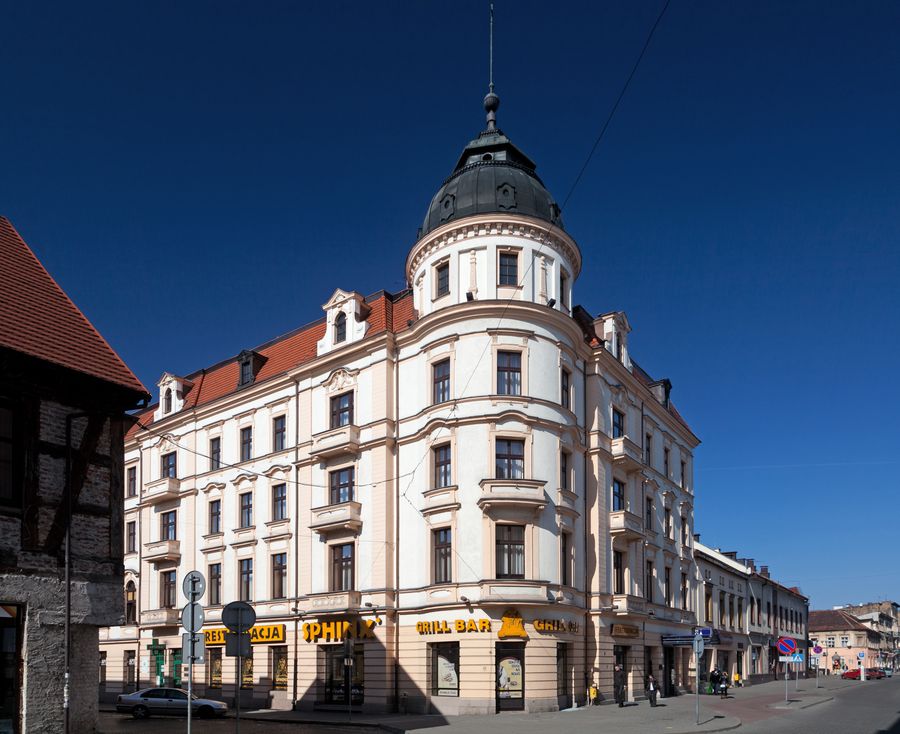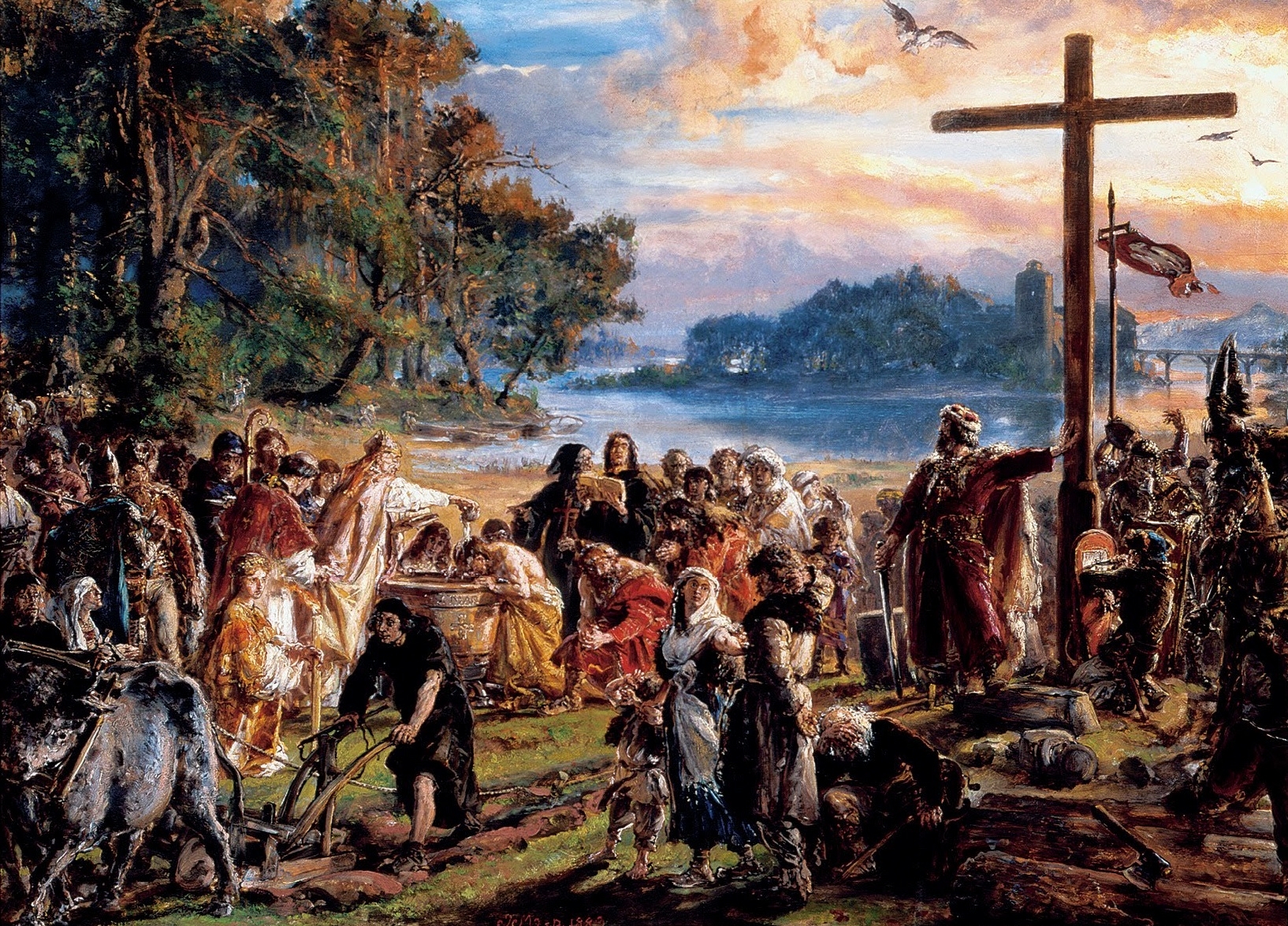|
Barcin
Barcin (german: Bartschin, 1943-45 Bartelstädt) is a town in Poland, in Kuyavian-Pomeranian Voivodeship, in Żnin County. As of December 2021, the town has a population of 7,255. History Barcin was founded in the 12th century, when it was part of Piast dynasty, Piast-ruled Poland. In 1472 it was granted Privilege (law), privileges, which established local fairs. In the following centuries, it was a private town, administratively located in the Kcynia County in the Kalisz Voivodeship (1314–1793), Kalisz Voivodeship in the Greater Poland Province of the Polish Crown. Following the joint German-Soviet invasion of Poland, which started World War II in September 1939, the town was invaded and then Occupation of Poland (1939–1945), occupied by Germany. Barcin was one of the sites of executions of Polish people, Poles carried out by Germany in 1939 as part of the ''Intelligenzaktion''. Three Poles who were either born or lived in Barcin were also murdered by the Russians in the l ... [...More Info...] [...Related Items...] OR: [Wikipedia] [Google] [Baidu] |
Gmina Barcin
__NOTOC__ Gmina Barcin is an urban-rural gmina (administrative district) in Żnin County, Kuyavian-Pomeranian Voivodeship, in north-central Poland. Its seat is the town of Barcin, which lies approximately east of Żnin and south of Bydgoszcz. The gmina covers an area of , and as of 2006 its total population is 14,791, of which the population of Barcin is 7,810, and the population of the rural part of the gmina is 6,981. Villages Apart from the town of Barcin, Gmina Barcin contains the villages and settlements of Aleksandrowo, Augustowo, Barcin-Wieś, Bielawy, Dąbrówka Barcińska, Gulczewo, Józefinka, Julianowo, Kania, Knieja, Krotoszyn, Mamlicz, Młodocin, Piechcin, Pturek, Sadłogoszcz, Szeroki Kamień, Wapienno, Wolice, Zalesie Barcińskie and Złotowo. Neighbouring gminas Gmina Barcin is bordered by the gminas of Dąbrowa, Łabiszyn, Pakość, Złotniki Kujawskie and Żnin Żnin (german: Znin, 1941-45: Dietfurt) is a town in north-central Poland with a popu ... [...More Info...] [...Related Items...] OR: [Wikipedia] [Google] [Baidu] |
Żnin County
__NOTOC__ Żnin County ( pl, powiat żniński) is a unit of territorial administration and local government (powiat) in Kuyavian-Pomeranian Voivodeship, north-central Poland. It came into being on January 1, 1999, as a result of the Polish local government reforms passed in 1998. Its administrative seat and largest town is Żnin, which lies south-west of Bydgoszcz and west of Toruń. The county contains three other towns: Barcin, lying east of Żnin, Łabiszyn, lying north-east of Żnin, and Janowiec Wielkopolski, south-west of Żnin. The county covers an area of . As of 2019 its total population is 68,113, out of which the population of Żnin is 13,864, that of Barcin is 7,408, that of Łabiszyn is 4,472, that of Janowiec Wielkopolski is 3,953, and the rural population is 38,416. Neighbouring counties Żnin County is bordered by Nakło County to the north, Bydgoszcz County to the north-east, Inowrocław County to the east, Mogilno County to the south-east, Gniezno Count ... [...More Info...] [...Related Items...] OR: [Wikipedia] [Google] [Baidu] |
Voivodeship Road
According to classes and categories of public roads in Poland, a voivodeship road ( pl, droga wojewódzka) is a category of roads one step below national roads National may refer to: Common uses * Nation or country ** Nationality – a ''national'' is a person who is subject to a nation, regardless of whether the person has full rights as a citizen Places in the United States * National, Maryland, ce ... in importance. The roads are numbered from 100 to 993. Total length of voivodeship roads in Poland is of which are unpaved (2008).Transport – activity results in 2008 , Główny Urząd Statystyczny List of voivodeship roads Current list ...[...More Info...] [...Related Items...] OR: [Wikipedia] [Google] [Baidu] |
Kuyavian-Pomeranian Voivodeship
Kuyavian-Pomeranian Voivodeship, also known as Cuiavian-Pomeranian Voivodeship or simply Kujawsko-Pomorskie, or Kujawy-Pomerania Province ( pl, województwo kujawsko-pomorskie ) is one of the 16 voivodeships (provinces) into which Poland is divided. It was created on 1 January 1999 and is situated in mid-northern Poland, on the boundary between the two historic regions from which it takes its name: Kuyavia ( pl, Kujawy) and Pomerania ( pl, Pomorze). Its two chief cities, serving as the province's joint capitals, are Bydgoszcz and Toruń. History The Kuyavian-Pomeranian Voivodeship was created on 1 January 1999, as a result of the Polish local government reforms adopted in 1998. It consisted of territory from the former Bydgoszcz, Toruń and Włocławek Voivodeships. The area now known as Kuyavia-Pomerania was previously divided between the region of Kuyavia and the Polish fiefdom of Royal Prussia. Of the two principal cities of today's Kuyavian-Pomeranian voivodeship, one ( ... [...More Info...] [...Related Items...] OR: [Wikipedia] [Google] [Baidu] |
Polish People
Poles,, ; singular masculine: ''Polak'', singular feminine: ''Polka'' or Polish people, are a West Slavic nation and ethnic group, who share a common history, culture, the Polish language and are identified with the country of Poland in Central Europe. The preamble to the Constitution of the Republic of Poland defines the Polish nation as comprising all the citizens of Poland, regardless of heritage or ethnicity. The majority of Poles adhere to Roman Catholicism. The population of self-declared Poles in Poland is estimated at 37,394,000 out of an overall population of 38,512,000 (based on the 2011 census), of whom 36,522,000 declared Polish alone. A wide-ranging Polish diaspora (the '' Polonia'') exists throughout Europe, the Americas, and in Australasia. Today, the largest urban concentrations of Poles are within the Warsaw and Silesian metropolitan areas. Ethnic Poles are considered to be the descendants of the ancient West Slavic Lechites and other tribes that inhabi ... [...More Info...] [...Related Items...] OR: [Wikipedia] [Google] [Baidu] |
Invasion Of Poland
The invasion of Poland (1 September – 6 October 1939) was a joint attack on the Republic of Poland by Nazi Germany and the Soviet Union which marked the beginning of World War II. The German invasion began on 1 September 1939, one week after the signing of the Molotov–Ribbentrop Pact between Germany and the Soviet Union, and one day after the Supreme Soviet of the Soviet Union had approved the pact. The Soviets invaded Poland on 17 September. The campaign ended on 6 October with Germany and the Soviet Union dividing and annexing the whole of Poland under the terms of the German–Soviet Frontier Treaty. The invasion is also known in Poland as the September campaign ( pl, kampania wrześniowa) or 1939 defensive war ( pl, wojna obronna 1939 roku, links=no) and known in Germany as the Poland campaign (german: Überfall auf Polen, Polenfeldzug). German forces invaded Poland from the north, south, and west the morning after the Gleiwitz incident. Slovak military forces ... [...More Info...] [...Related Items...] OR: [Wikipedia] [Google] [Baidu] |
World War II
World War II or the Second World War, often abbreviated as WWII or WW2, was a world war that lasted from 1939 to 1945. It involved the World War II by country, vast majority of the world's countries—including all of the great powers—forming two opposing military alliances: the Allies of World War II, Allies and the Axis powers. World War II was a total war that directly involved more than 100 million Military personnel, personnel from more than 30 countries. The major participants in the war threw their entire economic, industrial, and scientific capabilities behind the war effort, blurring the distinction between civilian and military resources. Air warfare of World War II, Aircraft played a major role in the conflict, enabling the strategic bombing of population centres and deploying the Atomic bombings of Hiroshima and Nagasaki, only two nuclear weapons ever used in war. World War II was by far the List of wars by death toll, deadliest conflict in hu ... [...More Info...] [...Related Items...] OR: [Wikipedia] [Google] [Baidu] |
Occupation Of Poland (1939–1945)
The occupation of Poland by Nazi Germany and the Soviet Union during World War II (1939–1945) began with the German-Soviet invasion of Poland in September 1939, and it was formally concluded with the End of World War II in Europe, defeat of Germany by the Allies in May 1945. Throughout the entire course of the occupation, the territory of Poland was divided between Nazi Germany and the Soviet Union (USSR) both of which intended to eradicate Poland's culture and subjugate its people. In the summer-autumn of 1941, the Territories of Poland annexed by the Soviet Union, lands which were annexed by the Soviets were overrun by Germany in the course of the initially successful Operation Barbarossa, German attack on the USSR. After a few years of fighting, the Red Army drove the Wehrmacht, German forces out of the USSR and crossed into Poland from the rest of Central and Eastern Europe. Sociologist Tadeusz Piotrowski (sociologist), Tadeusz Piotrowski argues that both occupying power ... [...More Info...] [...Related Items...] OR: [Wikipedia] [Google] [Baidu] |
Voivodeships Of Poland
A voivodeship (; pl, województwo ; plural: ) is the highest-level administrative division of Poland, corresponding to a province in many other countries. The term has been in use since the 14th century and is commonly translated into English as "province". The administrative divisions of Poland, Polish local government reforms adopted in 1998, which went into effect on 1 January 1999, created sixteen new voivodeships. These replaced the 49 subdivisions of the Polish People's Republic, former voivodeships that had existed from 1 July 1975, and bear a greater resemblance (in territory, but not in name) to the voivodeships that existed between 1950 and 1975. Today's voivodeships are mostly named after historical and geographical regions, while those prior to 1998 generally took their names from the cities on which they were centered. The new units range in area from under (Opole Voivodeship) to over (Masovian Voivodeship), and in population from nearly one million (Opole Voivodes ... [...More Info...] [...Related Items...] OR: [Wikipedia] [Google] [Baidu] |
Intelligenzaktion
The ''Intelligenzaktion'' (), or the Intelligentsia mass shootings, was a series of mass murders which was committed against the Polish intelligentsia (teachers, priests, physicians, and other prominent members of Polish society) early in the Second World War (1939–45) by Nazi Germany. The Germans conducted the operations in accordance with their plan to Germanize the western regions of occupied Poland, before their territorial annexation to the German Reich. The mass murder operations of the ''Intelligenzaktion'' resulted in the killing of 100,000 Polish people; by way of forced disappearance, the Germans imprisoned and killed select members of Polish society, identified as enemies of the Reich before the war; they were buried in mass graves which were dug in remote places. In order to facilitate the depopulation of Poland, the Germans terrorised the general populace by carrying out public, summary executions of select intellectuals and community leaders, before they effec ... [...More Info...] [...Related Items...] OR: [Wikipedia] [Google] [Baidu] |
Greater Poland Province Of The Polish Crown
, subdivision = Province , nation = Poland , year_start = , event_end = Third Partition of Poland , year_end = , image_map = Prowincje I RP.svg , image_map_caption = , capital = Poznań , political_subdiv = 13 voivodeships and one duchy , common_name = Greater Poland Province ( pl, Prowincja Wielkopolska) was an administrative division of the Crown of the Kingdom of Poland from 1569 until 1795. The name of the province comes from the historic land of Greater Poland. The Greater Poland Province consisted initially of twelve voivodeships (after 1768 thirteen voivodeships)Lucjan Tatomir, ''Geografia ogólna i statystyka ziem dawnej Polski'', Drukarnia "Czasu" W. Kirchmayera, Kraków, 1868, p. 147 (in Polish) and one duchy: # Brześć Kujawski Voivodeship # Chełmno Voivodeship # Gniezno Voivodeship, est. in 1768 # Inowrocław Voivodeship # Kalisz Voiv ... [...More Info...] [...Related Items...] OR: [Wikipedia] [Google] [Baidu] |






